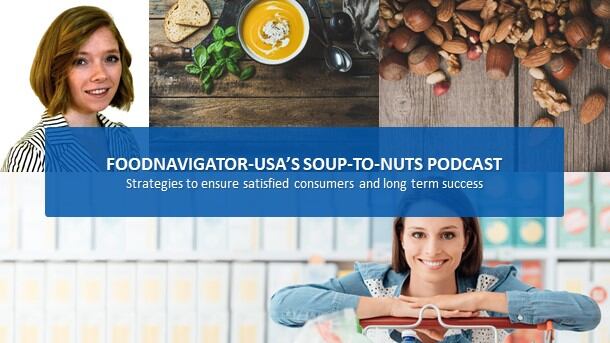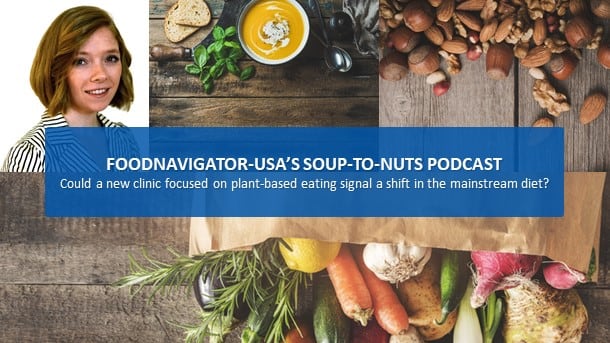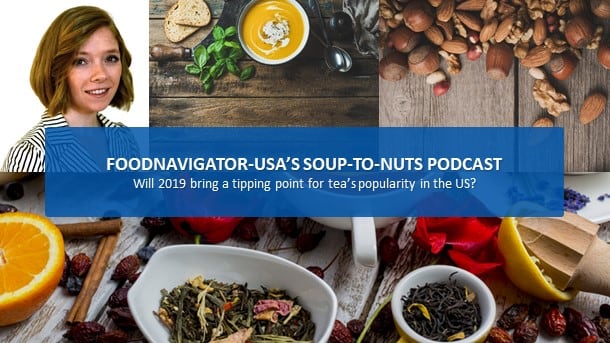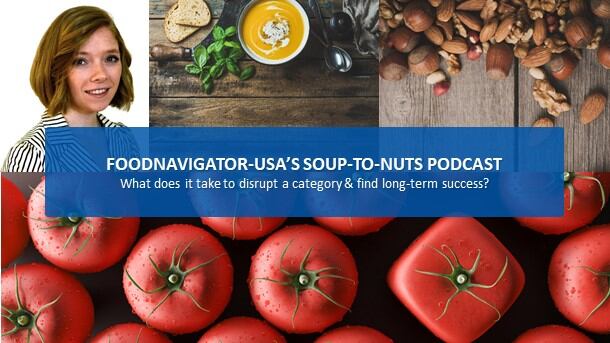According to the American Customer Satisfaction Index’s Nondurable Products Report released at the end of last year, customer satisfaction with grocery food – and in particularly packaged products – climbed 1.2 points to 82 to 2018. While that may not seem like a big jump or a particularly high score given the scale ranges from zero to 100, it is a notable achievement considering 85 the highest score ACSI gave any of the 46 industries or 10 economic sectors it rated based on roughly 250,000 customer interviews. (And for those who are curious, the winner of the highest score was breweries.)
The report reveals that innovation – especially around healthy options – was a major driver in the uptick, but it also cautions that the price increase that often comes with new products can take a toll down the road when novelty wears off unless companies leverage additional strategies to keep consumers’ satisfied.
In this episode of FoodNavigator-USA’s Soup-to-Nuts podcast, the managing director of the ACSI David VanAmburg shares several strategies for ensuring consumer satisfaction and points out a few missteps to avoid.
Offer innovative solutions that are customize and reliable
One of the most effective strategies that the food and beverage industries have embraced in recent years to ensure consumer satisfaction and ongoing business, according to VanAmburg, is to offer products that can be personalized or tailored to meet consumers’ specific needs.
But based on the revolving door of line extensions that offer little more than a new flavor or pack size, a key element of success for this strategy is to ensure each launch also of high quality, which VanAmburg explains means simultaneously delivering reliability.
“Quality is really a function of two critical components as we measure it at ACSI. … One is what we call customization or personal preference. It is the ability of a manufacturer to provide the range of products that appeal to … different personal tastes. … And the other critical element of quality is what we call reliability,” VanAmburg said.
In recent years, the chocolate industry has excelled at providing quality products that balance personalization and reliability to offer high quality products that satisfy consumers in a way that can overcome other threatening macro trends, such as sugar reduction.
For example, VanAmburg explains, Hershey leads the food industry in the ACSI report with a score of 86 – which is a full two points ahead of its closest confection competitor Mars, which clocked in at 84 this year.
By offering M&Ms in every color and a wide variety of flavor profiles, Hershey allows consumers to mix and max to meet their needs – whether that be selecting a school’s colors for a fundraiser or offering a dark chocolate option tailored for adults a milk chocolate option for children. At the same time, VanAmburg said, each M&M tastes the same each time – making it a dependable treat that consumers can rely on.
Another example of balancing these two elements of quality is in the soft drink industry. This segment historically excelled at satisfying consumers in large part because it has leaned heavily on innovation as a strategy. Players in this space have expanded their portfolios with so many options that consumers could continue to tailor their purchases to meet their evolving desires.
However, as illustrated by a 2.4 drop in customer satisfaction with soft drinks in the ACSI 2018 report, innovation for innovation’s sake will not be successful unless it meets specific consumer needs, which increasingly are for healthy, lower calorie beverages.
Indeed, VanAmburg notes that this is a guiding factor in the category’s most recent successful pivot to water and functional beverages.
According to ACSI, the posterchild for the most recent renovation among the traditional soft drink players is Keurig Dr Pepper, which saw a 2.4% boost in consumer satisfaction to 84. This can be attributed in part to Dr Pepper Snapple’s merger with Keurig Green Mountain in July to form a new entity, which then expanded its healthy beverage portfolio with the acquisition of CORE Nutrition.
Coca-Cola and PepsiCo both have been slower off the mark for this latest round of innovation and as a result they each saw their satisfaction scores plummet. Coca-Cola fell 5% to 81 and PepsiCo fell 6% to 80 in 2018 compared to 2017.
PepsiCo’s acquisition of the sparkling water firm SodaStream and Coca-Cola’s impending move into the coffee market, however, could help each recoup some of their losses in the coming years, ACSI predicts.
Go where the consumer is
Another successful strategy as illustrated by Dole’s dramatic 4% increase in satisfaction score to 85 and General Mill’s 2% increase to 84 from 2017 to 2018 is to go where the consumer is.
For Dole, this meant launching a new line of snacks-to-go and redesigning salad packaging, while General Mills invested more heavily in organic – and nostalgic – products.
Failure to follow the consumer to new spaces can also be a damaging misstep, according to VanAmburg, who pointed to Kellogg’s and Campbell Soup’s low scores of only 81 as an example. He explained both companies are heavily ensconced in increasingly sluggish categories, including cereal and canned soup.
Smaller brands win on quality or price
For smaller brands to satisfy consumers they need to pursue a strategy of either delivering high quality or price-based value, according to VanAmburg.
He explained that small manufacturers fall into two buckets at opposite ends of the spectrum. Either that are luxury items that succeed by selling hard-to-find, unique or higher-quality products, or they are store brands and me-too items that focus solely on low prices.
“Both win for different reasons,” that reflect different consumer needs, he said.
As illustrated by the report, no single strategy is a guarantee for satisfaction, but rather companies must balance multiple consumer demands and be able to quickly pivot when those demands shift unexpectedly. Overall, the report shows, the food and beverage industries already manage this well and as such have earned consistent high marks from shoppers.




